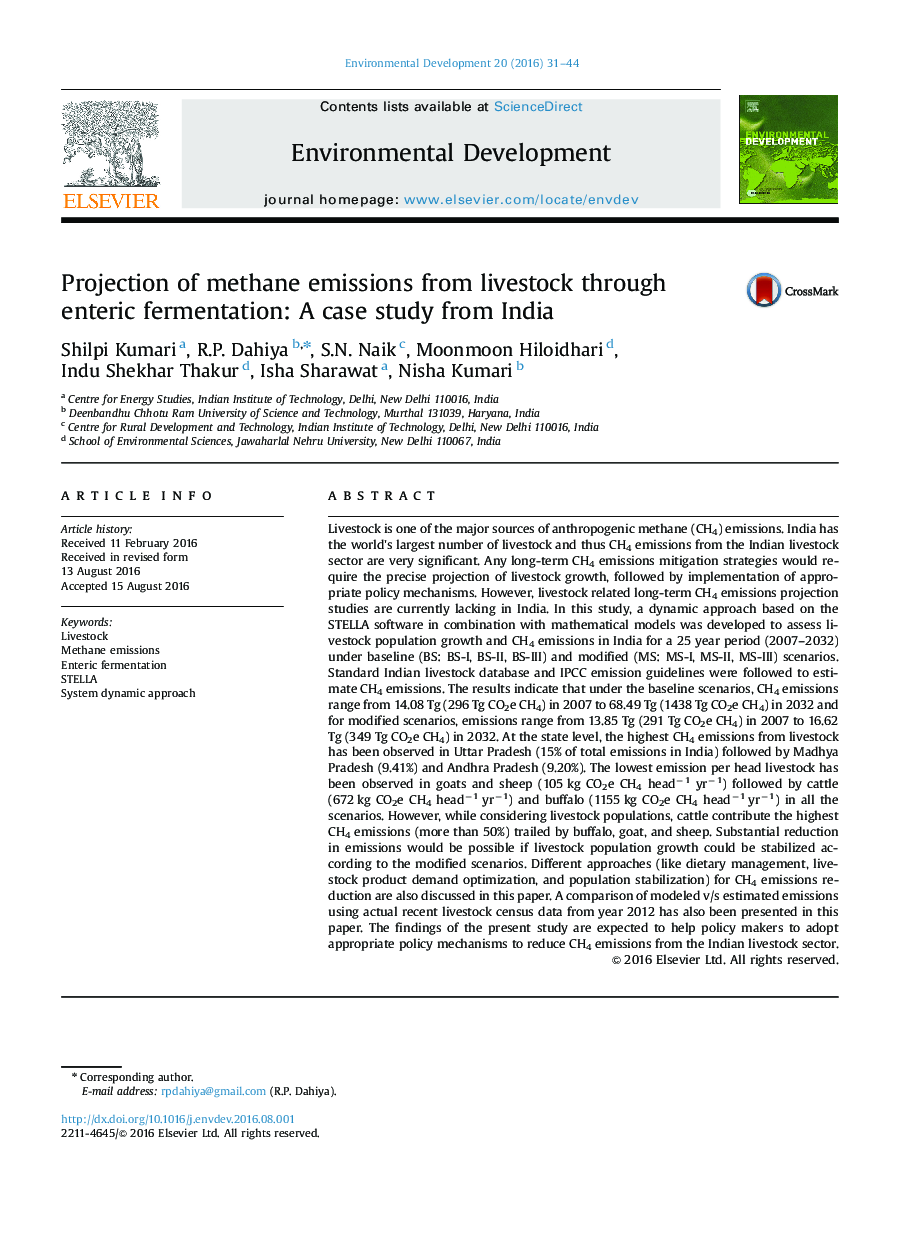| کد مقاله | کد نشریه | سال انتشار | مقاله انگلیسی | نسخه تمام متن |
|---|---|---|---|---|
| 5744150 | 1618081 | 2016 | 14 صفحه PDF | دانلود رایگان |
- Software and mathematical approaches to project CH4 emissions from Indian livestock.
- Projection of livestock growth and CH4 emissions under six scenarios.
- Cattle contribute highest CH4 emissions followed by buffalo, goat and sheep.
- Uttar Pradesh contributes the highest emissions among the Indian states.
- Modified scenario MS-I shows the highest CH4 emissions reduction potential.
Livestock is one of the major sources of anthropogenic methane (CH4) emissions. India has the world's largest number of livestock and thus CH4 emissions from the Indian livestock sector are very significant. Any long-term CH4 emissions mitigation strategies would require the precise projection of livestock growth, followed by implementation of appropriate policy mechanisms. However, livestock related long-term CH4 emissions projection studies are currently lacking in India. In this study, a dynamic approach based on the STELLA software in combination with mathematical models was developed to assess livestock population growth and CH4 emissions in India for a 25 year period (2007-2032) under baseline (BS: BS-I, BS-II, BS-III) and modified (MS: MS-I, MS-II, MS-III) scenarios. Standard Indian livestock database and IPCC emission guidelines were followed to estimate CH4 emissions. The results indicate that under the baseline scenarios, CH4 emissions range from 14.08 Tg (296 Tg CO2e CH4) in 2007 to 68.49 Tg (1438 Tg CO2e CH4) in 2032 and for modified scenarios, emissions range from 13.85 Tg (291 Tg CO2e CH4) in 2007 to 16.62 Tg (349 Tg CO2e CH4) in 2032. At the state level, the highest CH4 emissions from livestock has been observed in Uttar Pradesh (15% of total emissions in India) followed by Madhya Pradesh (9.41%) and Andhra Pradesh (9.20%). The lowest emission per head livestock has been observed in goats and sheep (105Â kg CO2e CH4 headâ1 yrâ1) followed by cattle (672Â kg CO2e CH4 headâ1Â yrâ1) and buffalo (1155Â kg CO2e CH4 headâ1Â yrâ1) in all the scenarios. However, while considering livestock populations, cattle contribute the highest CH4 emissions (more than 50%) trailed by buffalo, goat, and sheep. Substantial reduction in emissions would be possible if livestock population growth could be stabilized according to the modified scenarios. Different approaches (like dietary management, livestock product demand optimization, and population stabilization) for CH4 emissions reduction are also discussed in this paper. A comparison of modeled v/s estimated emissions using actual recent livestock census data from year 2012 has also been presented in this paper. The findings of the present study are expected to help policy makers to adopt appropriate policy mechanisms to reduce CH4 emissions from the Indian livestock sector.
185
Journal: Environmental Development - Volume 20, November 2016, Pages 31-44
